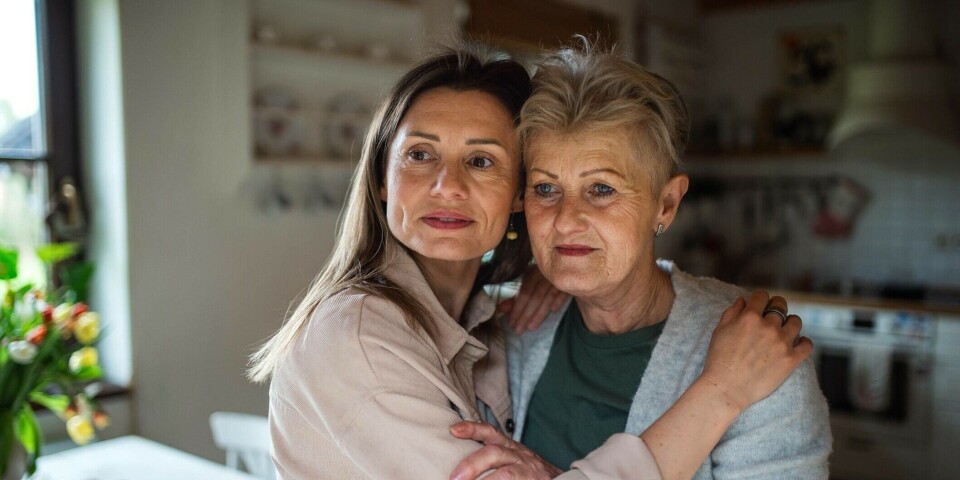THIS CONTENT IS BROUGHT TO YOU BY Oslo Metropolitan University - read more
Not everyone wants to help their elderly parents. Why?
There are other factors besides attitudes that determine who helps their parents when the need arises.

What expectations do people have regarding adult children helping ageing parents in need? And should parents adapt their lives so they can help adult children who need it?
These are some of the questions explored in two articles based on data from the Norwegian Life Course, Ageing, and Generation Study (NorLAG).
Is there a link between attitudes and actions?
Followed the same individuals over time
Researchers Hanna Vangen and Katharina Herlofson at OsloMet's Norwegian Social Research Institute NOVA have investigated the relationship between people's attitudes towards helping and caring – and the help they actually provide.
They used data from the NorLAG study, which allows them to follow the same individuals over time.

First, they looked at participants' general attitudes about adult children’s responsibility towards elderly parents.
Then, they compared these attitudes to the actual help and care the participants provided to their own parents 10 years down the line.
The parent-child relationship is key
“The results show that prior attitudes have no significant influence on whether adult children eventually assist their parents,” says Vangen.
Other factors seem to have more influence over whether children step in to help.
One of the most important is the quality of the relationship with their parents.
“Those who reported having a good relationship with their parents 10 years earlier were more likely to provide care than those who rated the relationship as weaker,” she explains.
The researchers also found several other factors that influence caregiving. These include whether the parents live alone, the distance between parents and children, and the parents' level of need for assistance.
Another finding is that daughters provide more care to mothers than to fathers.
Differences between biological parents and stepparents
The NorLAG data contains extensive information about diverse family structures.
Researcher Julia Sauter at the University of Geneva has examined differences in attitudes towards family care among those with stepchildren, those with biological children, and those with both.
She found that attitudes towards care and support differ between biological parents and stepparents.
The study was based on a hypothesis that people with stepchildren have lower expectations of receiving support from adult children, compared to those with only biological children.
However, she found no support for this hypothesis. The analyses show that stepparents were more likely than biological parents to believe that adult children have a duty to help their ageing parents.
One possible explanation, according to Sauter, is that stepparents may feel their partner receives too little support from their biological children.
When it comes to the question of whether parents should assist their adult children, there are also differences. Stepparents are less inclined to believe that parents should leave an inheritance to their children or adjust their lives to support them if needed.
The importance of studying family relationships
Both studies highlight how relational factors influence attitudes toward family caregiving and the actual caregiving provided.
Research suggests it may be more fruitful to focus on family relationships than examining general attitudes towards caregiving. This is particularly important when assessing the potential for future family-based care in Norwegian families.
References:
Sauter, J. Norwegian biological parents and stepparents’ attitudes towards family obligations in middle and old age, Journal of Family Issues, vol. 45, 2024. DOI: 10.1177/0192513X241236
Vangen, H. & Herlofson, K. Why care? How filial responsibility norms and relationship quality matter for subsequent provision of care to ageing parents, Ageing & Society, vol. 44, 2023. DOI: 10.1017/S0144686X23000235
———
Read the Norwegian version of this article on forskning.no

This content is paid for and presented by OsloMet
This content is created by Oslo Metropolitan University's communication staff, who use this platform to communicate science and share results from research with the public. Oslo Metropolitan University is one of more than 80 owners of ScienceNorway.no. Read more here.
More content from OsloMet:
-
"Norwegians practice a friendship version of a ‘one-night stand'"
-
"We need to talk about how we assess teacher students"
-
Cannabis use in Norway has increased: “Not everyone needs moral lectures or worried looks"
-
Many children with ADHD do not thrive at school
-
An out-of-control race: Why we fear artificial intelligence
-
One in four seniors feels digitally discriminated against




































